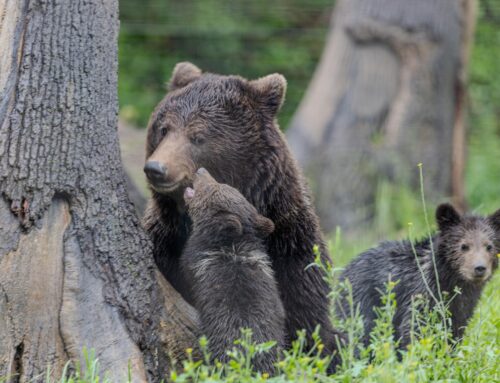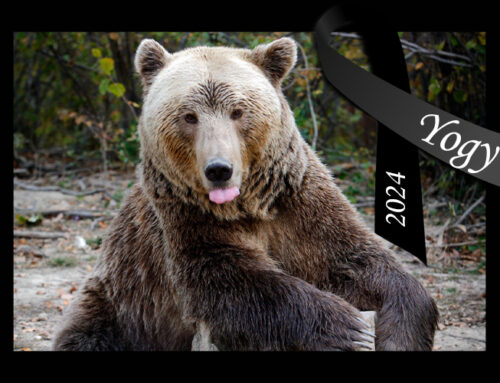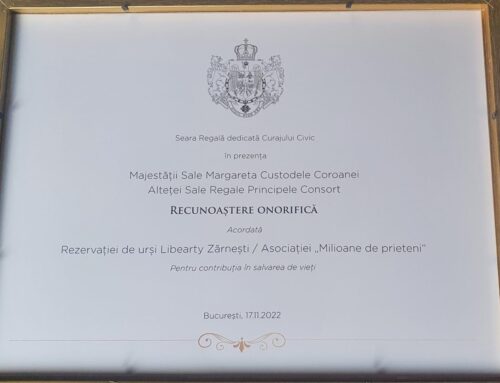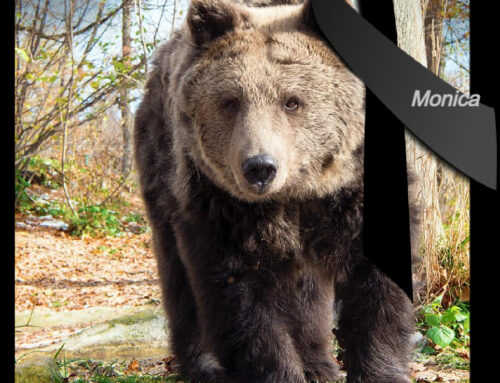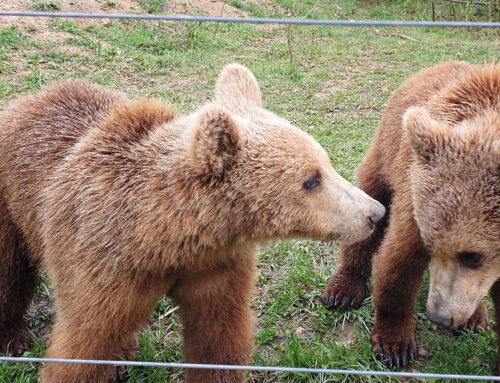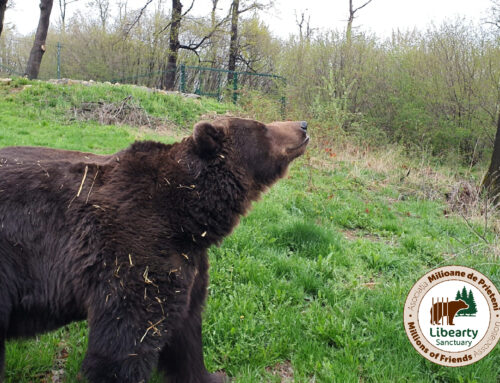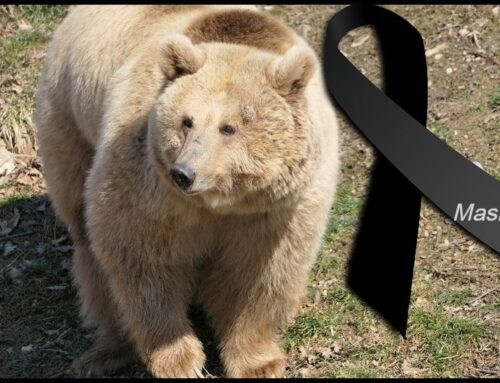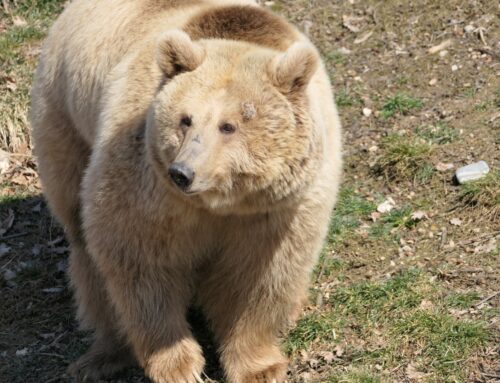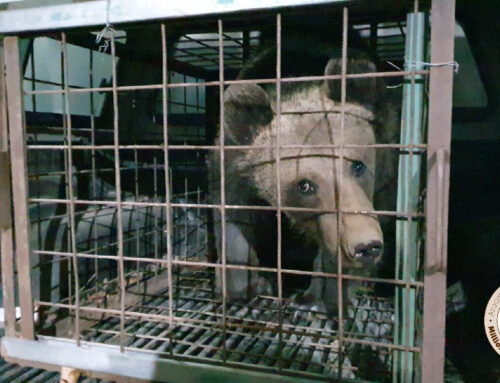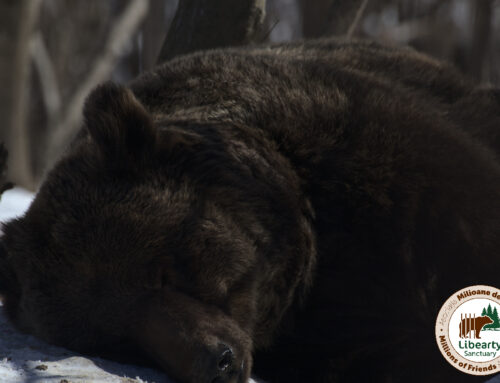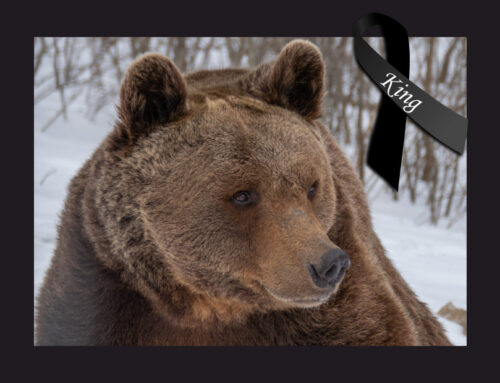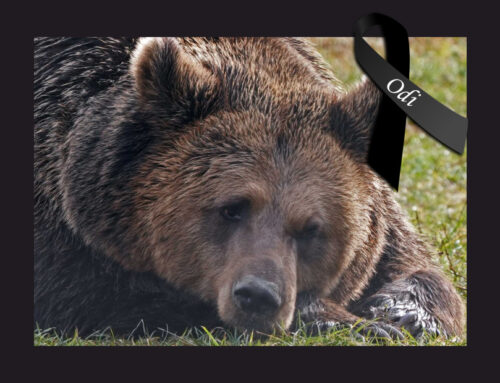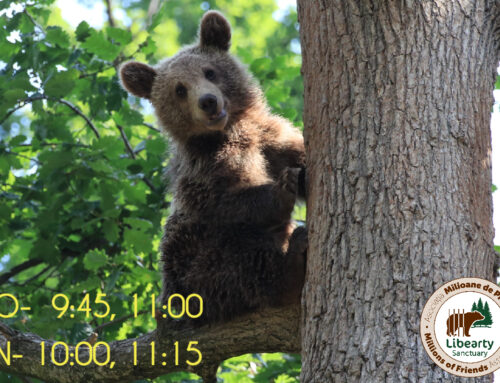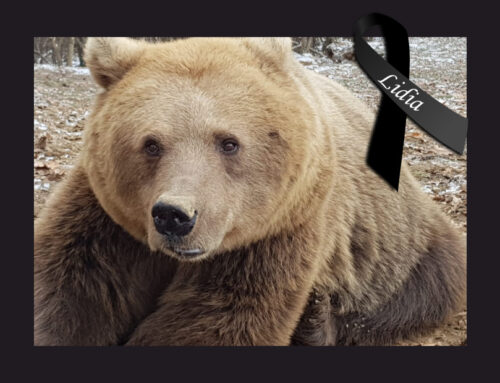
Betsy is the first and only bear at the, ”Libearty” sanctuary imported from overseas. As a circus artist, Betsy still has deep psychological wounds, damaged by the hard years of torment in the arena. These wounds are manifested as a stereotypical behavior—an obsessive patrol on the path of memories. Deprived of adequate space, the bears learn the habit of endlessly walking the same path: as do bears in some zoos.
From the circus to the farm
Betsy came to us from Texas, in the middle of 2010, at the age of 24. She crossed the ocean with a ship carrying a traveling circus from Europe. Then she „lived” nine more years on a farm, where she was held in a dirty hen coop, too small to be able to move freely with only the occasional feeding. At the farm there were another ten bears and two tigers. .”The animals were used in improvised circuses in large car-park”, according to an article in the Houston Chronicle.. HSPCA (Houston Society for the Prevention of Cruelty to Animals) Texas, contacted AMP asking us to take over the bear, since in the United States there are only sanctuaries for grizzly bears. Before arriving at Zărnești, Betsy endured several operations to repair her teeth, which were destroyed during her 20 years in captivity.
Circles and figure eights
Once housed in the sanctuary, the Betsy, the old lady, started receiving a special treatment for her stomach, which had been damaged by poor diet. This is the reason why she remained in the Training Area, where our staff is keeping her under close observation. The years have passed and Betsy now enjoys sunbathing like no other bear. Too old now to socialize with other bears, Betsy couldn’t overcome the mental trauma of a life spent behind bars. Some days her steps engrave the shape of a circle or a figure eight in the soil. Some researchers compare the behavior of these bears to that of people with obsessive-compulsive disorder. This patrolling represents a compul
In general, these behaviors fade with time, being triggered—most often—by the presence of a stressor (a stranger, for example). Fortunately, nature is the best medicine—of the 77 tenants at the sanctuary, less than two percent still exhibit repetitive behaviors.



